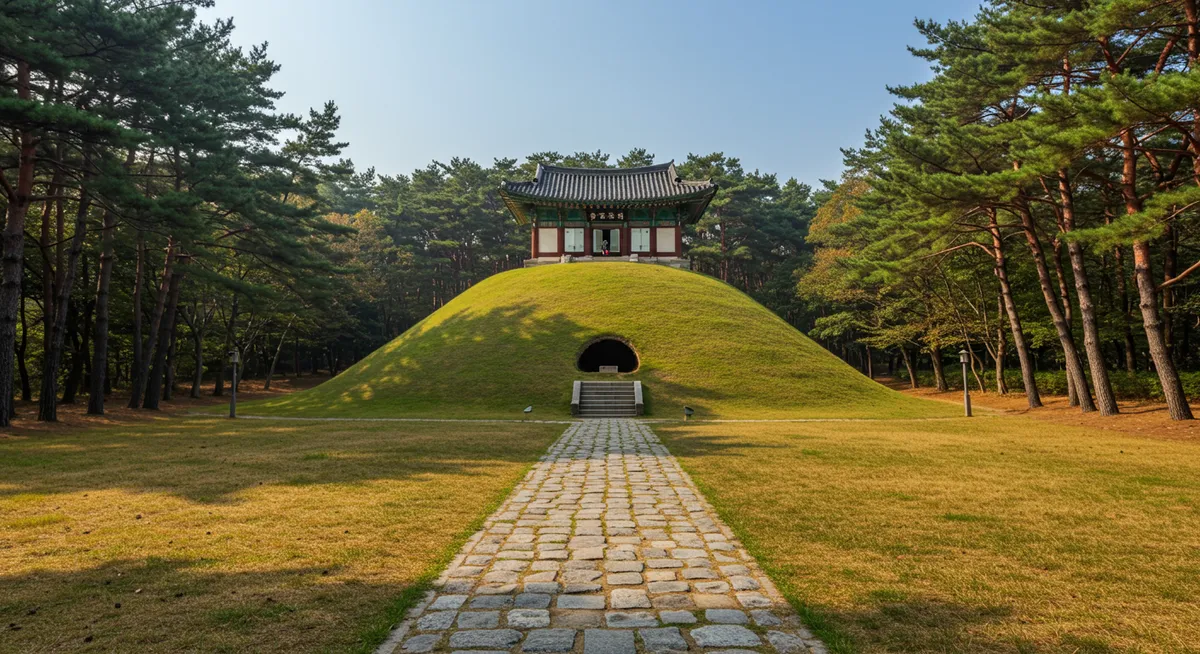
Daereungwon Tomb Park Gyeongju: A Visitor's Guide
Table of Contents
Want to find the best travel deals for this destination? Chat with our travel hacking specialist!
Get Travel HacksCategory: daereungwon-tomb-park-gyeongju
Daereungwon Tomb Park Gyeongju: Unearthing Ancient Silla
Having explored numerous historical sites across Asia, my visit to Daereungwon Tomb Park in Gyeongju felt uniquely profound. Nestled in the heart of South Korea's ancient Silla capital, this park offers a serene journey back in time, allowing visitors to walk among the monumental burial mounds of kings and nobles. It's more than just a collection of grassy hills; it's a living museum, where history literally rises from the earth, inviting you to ponder the legacies of a forgotten era. For more insights on Korean travel, explore our site. Come along as I share insights on making the most of your visit to this remarkable historical gem.
What Makes Daereungwon Tomb Park Unique?
Stepping into Daereungwon Tomb Park Gyeongju immediately strikes you with its serene grandeur. Unlike typical historical sites, the most prominent features here are the colossal, grassy burial mounds, towering like natural hills. These unique tumuli, distinct to the Silla Kingdom, are the final resting places of royalty and aristocrats. My first impression was how remarkably preserved the landscape felt, offering a tranquil escape within the bustling city. The park exemplifies the historical depth of Gyeongju, seamlessly blending ancient heritage with modern urban life. It’s an essential stop for anyone wishing to comprehend Korea's rich past, presenting a tangible link to a glorious dynasty. Furthermore, the sheer scale of the park itself is impressive.
Exploring the Cheonmachong Tomb
Among the over twenty large burial mounds within Daereungwon Tomb Park, Cheonmachong, or the 'Heavenly Horse Tomb,' stands out as the only one open to the public. Excavated in the 1970s, it offered an unprecedented glimpse into Silla funerary practices and artistic prowess. Inside, visitors can view replicas of thousands of artifacts, including a magnificent gilded crown and the iconic 'heavenly horse' painting. As a history enthusiast, seeing these intricate details up close was truly captivating, offering a profound connection to ancient craftsmanship. This unique insight makes Cheonmachong a definite highlight and one of the top things to do in Gyeongju, providing tangible evidence of Silla's sophistication and richness. It's an experience not to be missed.
Best Time to Visit & Practical Tips
To fully appreciate Daereungwon Tomb Park, consider visiting during spring (April-May) for cherry blossoms or autumn (October-November) for vibrant fall foliage, which truly enhances the park's tranquil beauty. The entry fee is nominal, making it an accessible historical site. It's largely flat, making it easy to navigate for all ages. My personal tip for visiting Gyeongju is to arrive early in the morning to beat the crowds, especially at Cheonmachong. The park is centrally located, just a short walk from other key attractions. For more specific seasonal advice, check out our guide on the best time to visit Gyeongju. This planning ensures a more contemplative and enjoyable visit to this ancient treasure.
The Significance of Silla Burial Mounds
The presence of such vast burial mounds within Daereungwon Tomb Park underscores Gyeongju's past as the enduring capital of the Silla Kingdom for nearly a millennium. These mounds aren't merely graves; they are monumental expressions of Silla's sophisticated social structure, advanced engineering, and deeply rooted spiritual beliefs. Each mound holds secrets, with discoveries from Cheonmachong providing invaluable insights into their daily lives, art, and ceremonial practices. Exploring these historic landscapes helps visitors grasp the profound cultural heritage of South Korea. I always find it fascinating how these ancient structures continue to shape the city's identity, making Gyeongju a truly unique destination. For a deeper dive into the city's broader historical tapestry, explore our comprehensive Gyeongju travel guide.
Frequently Asked Questions
What is the most famous tomb in Daereungwon?
How long does it take to explore Daereungwon Tomb Park?
Is there an entrance fee for Daereungwon Tomb Park?
Daereungwon Tomb Park Gyeongju offers more than just a historical walk; it's an immersive experience into the heart of the ancient Silla Kingdom. The colossal burial mounds and the accessible Cheonmachong Tomb provide unparalleled insights into Korea's rich past. Whether you're a history buff or simply seeking a tranquil escape, this park delivers a profoundly memorable journey. Don't miss this opportunity to connect with millennia of history. To plan your complete historical exploration of Gyeongju, and craft a perfect multi-day trip, begin with our Gyeongju itinerary.